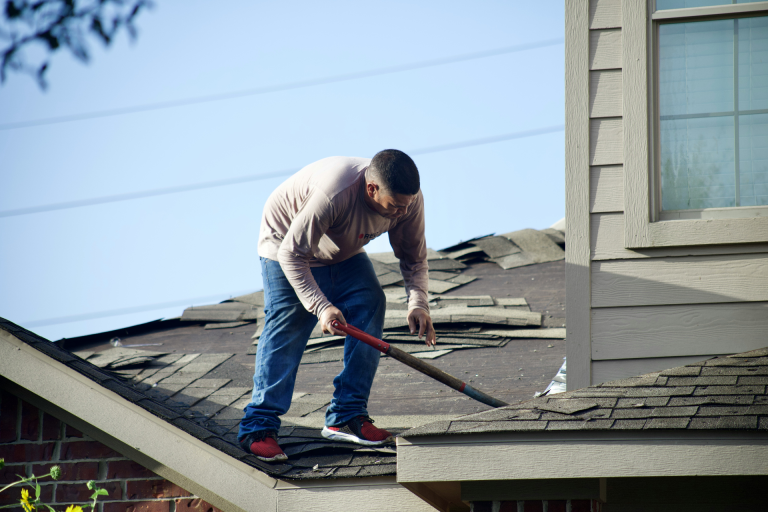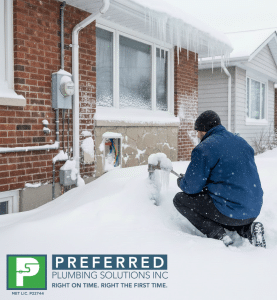You probably didn’t buy your home thinking about clogged gutters or cracked flashing. But home ownership comes with year-round responsibilities that, if ignored, quietly snowball into expensive emergencies like a leaky roof that could spike your cost of roof insurance when you file claims.
Roofing is one of those areas where DIY just doesn’t cut it. Sure, you can manage a few housekeeping tasks yourself, but when it comes to your roof, you need a professional who knows what to look for, what to fix, and how to prevent bigger problems down the line.
This guide walks you through seasonal home maintenance you shouldn’t skip, and shows you where hiring a professional saves you time, money, and future headaches.
Why Seasonal Maintenance Matters
Homes don’t fall apart overnight. It’s usually the small things, such as loose shingles, clogged gutters, or cracked caulking, that lead to the bigger issues: leaks, mold, pests, and structural damage.
Seasonal maintenance helps you stay ahead of these issues before they spiral. It keeps your home running efficiently, preserves its resale value, and reduces the need for emergency repairs.
Moreover, professional roofers can spot issues you might not, such as damaged flashing or inadequate ventilation, and make the necessary repairs safely and effectively. So if you’ve never scheduled a seasonal roofing checkup, now’s a good time to start.
Spring Maintenance Checklist
Spring is when winter’s damage starts to reveal itself, and ignoring it only makes summer repairs more expensive. Here’s what to keep an eye out for:
- Clean out gutters and downspouts: Watch for signs of roof runoff or water pooling near your foundation.
- Inspect the roof: Look for loose, curling, or missing shingles, especially after heavy storms or high winds.
- Check your attic: Moisture, mold, or sagging insulation could signal roof leaks.
- Wash siding and inspect paint: Cracked paint or rot can often indicate hidden moisture problems.
- Service your HVAC system: Clean your HVAC filters and schedule a professional tune-up for energy efficiency.
- Call a pro: If you spot ceiling stains, sagging, or mold in the attic, schedule a roofing inspection before summer heat exacerbates the issue.
Spring is a key window to book a professional inspection, especially if your area saw heavy snow, ice, or storms this winter.
Summer Maintenance Checklist
High heat and summer storms can put a strain on your home. Stay ahead of it with this summer checklist:
- Trim overhanging branches: Especially those that touch or hover near the roof or power lines.
- Inspect flashing and vents: Cracked caulking or loose fittings let water seep inside unnoticed.
- Check for sun damage: UV rays wear out roof materials over time. Watch for fading, curling, or brittleness.
- Evaluate attic ventilation: Poor airflow can lead to higher utility bills and moisture buildup.
- Bring in a roofing expert: They can spot signs of warping and material breakdown.
Summer can be brutal on roofing materials. A professional roofer can evaluate your system for heat damage and prep it for late-summer storms.
Fall Maintenance Checklist
Fall is your last chance to prep before winter hits. Here’s how to use it wisely:
- Clear the gutters: Leaves and debris block drainage, which can cause damaging ice dams.
- Inspect the roof: Look for soft spots, sagging, or damaged flashing.
- Seal around skylights and vents: These are common spots for air and water leaks.
- Schedule a full inspection: Fall is the ideal time for any necessary repairs before cold weather arrives.
- Seal driveway and foundation cracks: This prevents water intrusion and freeze-thaw damage.
- Winterize outdoor plumbing: Drain and cover exterior faucets and sprinkler lines to prevent freezing.
Cold weather makes roof repairs more challenging and expensive. A fall roofing inspection fixes issues early, while it’s safe and affordable.
Winter Maintenance Checklist
Winter’s all about prevention, not reaction. Once ice sets in, quick fixes become impossible. So here’s what you should focus on:
- Keep gutters free of snow and ice: Ice dams lead to slow-forming leaks and interior damage.
- Monitor your attic: After snowstorms, check for water stains or frost buildup.
- Don’t walk on icy roofs: It’s dangerous. Hire a professional for snow removal or emergency fixes.
Damage in winter is subtle but constant. Just because you don’t see dripping water doesn’t mean your roof is holding up.
Why You Should Call a Roofing Pro
Not all roof issues come with obvious warning signs. Some start as tiny gaps in flashing or slow leaks that rot wood silently for months. A trained roofer knows how to spot these before they cost you thousands.
Here’s why it pays to call in a professional instead of guessing:
- It affects your insurance: A neglected or aging roof can lead to higher rates or reduced coverage.
- Warranties get voided: Many roofing materials lose their warranty if you attempt DIY repairs.
- Using the wrong materials leads to more damage: Roofing systems are specific, so patching with the wrong materials can create bigger issues in the future.
- Roofing is a dangerous profession: Falls are the leading cause of injuries in home repair. Plus, one misstep could cost more than the original repair.
- Professional inspections save money: The cost of an annual inspection is far less than replacing a roof or remediating water damage.
Think of it like this: your roof protects everything else. Investing in regular inspections keeps your insurance valid, your home dry, and your stress levels low.
Final Thoughts
Seasonal maintenance is what separates proactive homeowners from those who are constantly in a state of panic. It’s what keeps your home safe, efficient, and valuable, and it’s how you prevent minor problems from becoming major costs.
Not every job is a DIY project, especially when it comes to your roof. A professional inspection can reveal issues you’d never catch alone, extend your roof’s lifespan by several years, and give you peace of mind no matter the season. If it’s been more than 12 months since your last roof check, it’s time to get it checked before it implodes right over your head.













